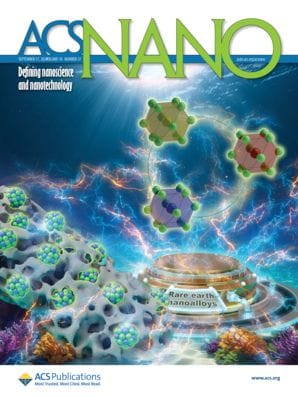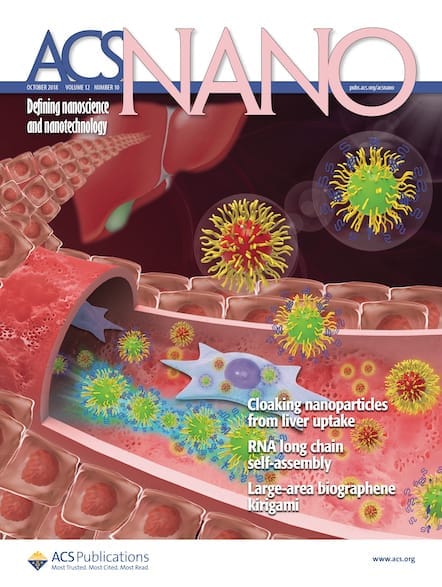Spider silk is one of the toughest materials known in nature. Unsurprisingly, it is driving the next generation of multifunctional high-performance, bioinspired medical materials.

Spider silk is often said to be stronger than steel, weight for weight. In recognition of this and its other inherent natural properties, scientists have tried to convert spidroins (spider silk proteins) into functional silk materials, primarily using two main methods. The first uses biomimetics, producing artificial spidroins under native-like conditions and then spinning them into fibers—but this method has yet to match the mechanical properties of native silk fibers. The second route harnesses biotechnology to produce large spidroins that can be spun into fibers with organic solvents, but the yields are currently too low to be scaled up sustainably.1 Mimicking the exact natural spinning process has not proven straightforward, and as we reported recently for caterpillars, spinning affects structure. Furthermore, it’s quite tricky to get spiders to make the silk for us directly, since they tend to be both highly territorial and cannibalistic—not ideal traits for a farm animal—and so efforts continue to find a solution.
Now, a new study in ACS Nano presents a highly efficient spinning strategy that enables mass preparation of artificial spider silk at different scales.2 Amyloids are a class of proteins characterized by their ability to form cross-β fibrils, in which two β-sheets are held tightly together by interdigitating side chains that create a zipper-like "spine."3 By simulating the structural stability mechanism of the amyloid peptide cross-β-spine using computer dynamics, the researchers were able to design an artificial amyloid spidroin with significantly higher yields. This material was then used to fabricate “spiders” with artificial spinning glands. Going one step further and combining these artificial spiders with 3D printing, the team were able to perform patterned air spinning at both the macro- and microscale. The authors report that the resulting patterned artificial spider silk had excellent pump-free liquid flow and electrical conductivity.

Overexpressed Artificial Spidroin Based Microneedle Spinneret for 3D Air Spinning of Hybrid Spider Silk
DOI: 10.1021/acsnano.4c08557
The researchers wove their artificial spider silk into wound dressings, which they then tested on mice with osteoarthritis and chronic wounds caused by diabetes. They found that drug treatments could be easily added to the silk dressings, which resulted in more effective wound healing than traditional bandages. These incredible findings suggest that artificial spider silk based on an exact spinning strategy could play a major role the construction of next-generation smart wearables and more eco-friendly wound-healing materials. Most traditional wound dressings rely on polymer or composite biobased materials as raw materials, but poor biodegradability means such dressings may release microplastics during use. Therefore, there is an urgent need for a highly degradable, high-performance material to replace these traditional textiles, and spider silk could be the key—delivering biocompatibility, biodegradability, cell adhesion, and good breathability.
Read More "Spins" on Fiber Fabrication in ACS Journals
Scientific inspiration is everywhere in nature: in addition to spiders, mussels, velvet worms, hagfish, and mistletoe are all known to make excellent polymeric fibers and slime. A 2023 article in Chemical Reviews (part of a Special Issue on Sustainable Materials) provides a great overview of key physical and chemical processes involved in bioinspired fiber fabrication.4 Another review in ACS Applied Materials & Interfaces explores the fundamental principles and applications of solution blow spinning—a low-cost technique that can be used to deposit fibers in situ, and which could also have utility in creating biomedical materials.5
Interestingly, female weaving spiders can produce up to seven different types of silk, differing in their proline content and hydrophobicity.6 So far, the major ampullate silks that function as draglines are the best investigated type, but perhaps there is still more to learn here from the spiders themselves.
References
- Johansson, J. Rising A. Doing What Spiders Cannot—A Road Map to Supreme Artificial Silk Fibers. ACS Nano 2021, 15, 2, 1952–1959.
- Lin, B. et al. Overexpressed Artificial Spidroin Based Microneedle Spinneret for 3D Air Spinning of Hybrid Spider Silk. ACS Nano 2024, 18, 37, 25778–25794.
- Dai B, et al. Fibril Self-Assembly of Amyloid–Spider Silk Block Polypeptides. Biomacromolecules 2019, 20, 5, 2015–2023.
- Rising, A. and Harrington, M.J. Biological Materials Processing: Time-Tested Tricks for Sustainable Fiber Fabrication. Chem. Rev. 2023, 123, 5, 2155–2199.
- Daristotle, J.L. et al. A Review of the Fundamental Principles and Applications of Solution Blow Spinning. ACS Appl. Mater. Interfaces 2016, 8, 51, 34951–34963.
- Thamm, C, and Scheibel, T. Recombinant Production, Characterization, and Fiber Spinning of an Engineered Short Major Ampullate Spidroin (MaSp1s). Biomacromolecules 2017, 18, 4, 1365–1372.
